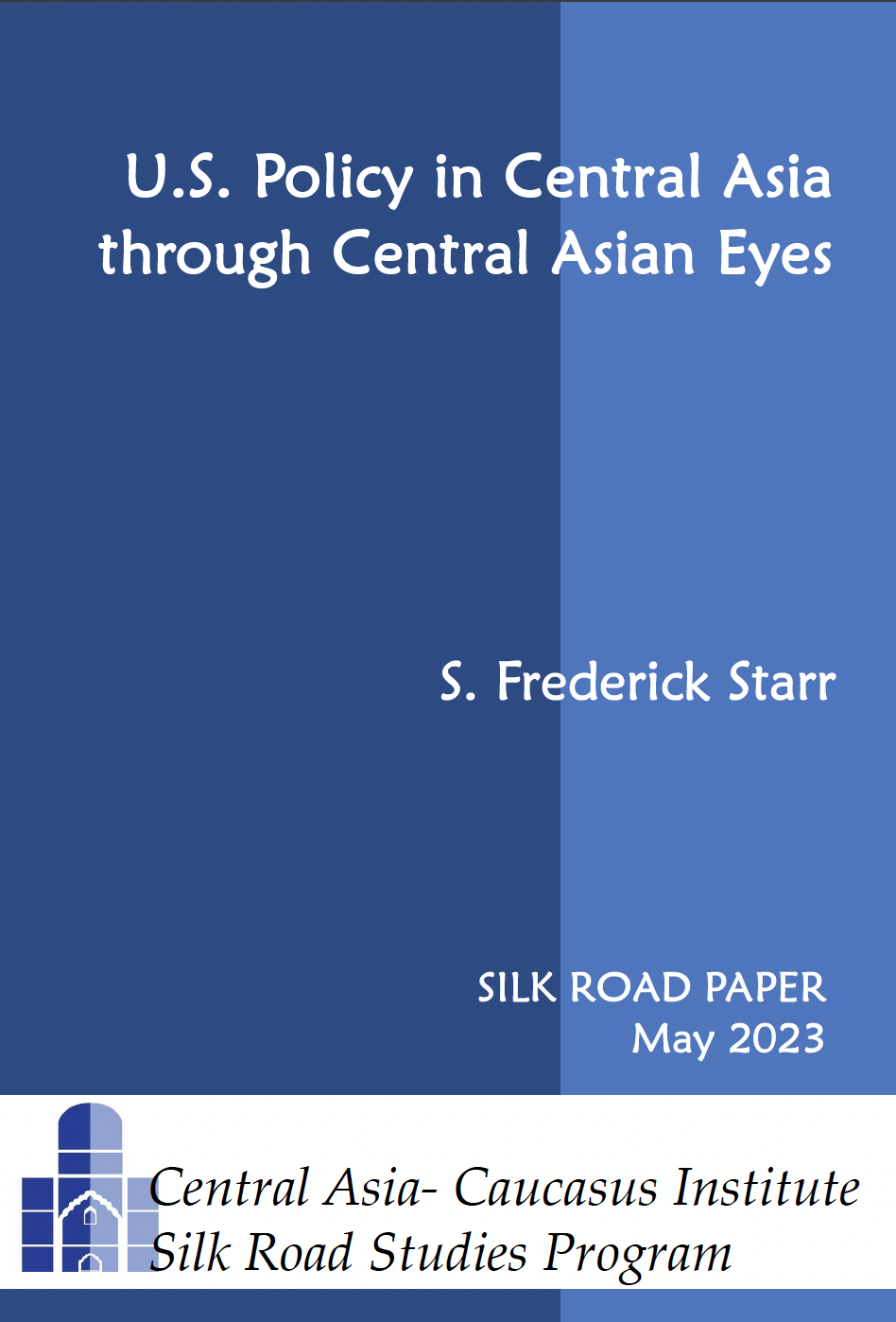Kyrgyzstan and Tajikistan Resolve Final Border Dispute: A Historic but Fragile Peace
By Aigerim Turgunbaeva
On March 31, the presidents of Kyrgyzstan, Tajikistan, and Uzbekistan met in the Tajik city of Khujand to officially announce that all territorial disputes between their countries had been resolved. While future tensions cannot be ruled out, the region’s leaders now seem to believe that cooperation brings more benefits than conflict. For the Ferghana Valley, that shared outlook may be the strongest hope for lasting peace.
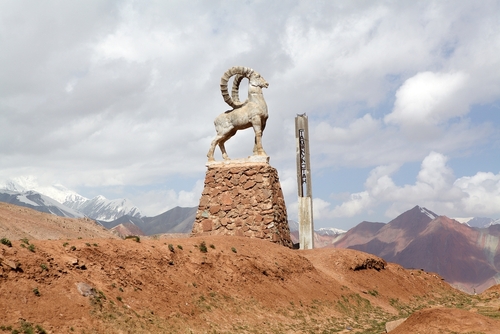
BACKGROUND: On March 13, Kyrgyz President Sadyr Japarov and Tajik President Emomali Rahmon signed a landmark treaty in Bishkek that definitively demarcates the entire 1,000-kilometer border between the two countries. The signing ended decades of intermittent clashes and unresolved territorial disputes rooted in the Soviet-era administrative boundaries. The agreement has been heralded as a major achievement in Central Asia’s regional integration efforts. Yet, the circumstances under which the deal was brokered—notably the lack of transparency, absence of public debate, and suppression of dissent—raise important questions about governance, public trust, and the future of cross-border relations.
The border between Kyrgyzstan and Tajikistan has long been a source of friction, shaped by convoluted Soviet-era administrative divisions that ignored ethnic, geographic, and cultural realities. When both countries gained independence in 1991, these internal lines hardened into contested international borders. Enclaves, disputed villages, and overlapping claims turned the border zone—particularly Kyrgyzstan’s Batken region—into a hotbed of tension.As scholars have noted, Soviet planners in the 1920s and 1930s deliberately drew borders in ways that divided ethnic groups in order to weaken potential nationalist movements, creating enduring fault lines.
Violent clashes over land, roads, and water access occurred frequently, notably in 2014, 2021, and 2022. The 2022 conflict, which left more than 100 people dead and forced over 100,000 Kyrgyz citizens to flee their homes, was the deadliest to date. Civilian infrastructure, including schools and homes, was destroyed, exacerbating mistrust and trauma. Yet this tragedy also marked a turning point, prompting both governments to prioritize renewed negotiations. Talks resumed in late 2022 and intensified through 2023 and 2024, culminating in the March 2025 agreement.
Years of border-related violence left deep scars on both Kyrgyz and Tajik communities. Skirmishes often began with disputes over water access or road usage but escalated quickly due to the presence of military and paramilitary forces in civilian areas. Armed confrontations resulted in civilian casualties, displacement, and destruction of property. The 2021 and 2022 conflicts in particular revealed how unresolved borders and competing nationalist narratives can turn small incidents into full-scale battles.
These events created a humanitarian crisis, especially on the Kyrgyz side. Thousands were displaced multiple times, while cross-border trade and local economies ground to a halt. Despite multiple ceasefires and ad hoc agreements, durable peace remained elusive until the new treaty.
IMPLICATIONS: The treaty signed in Bishkek demarcates the full 972-kilometer boundary and resolves all outstanding territorial claims. While the full text of the agreement remains undisclosed, officials have confirmed that contentious zones like the Tajik exclave of Vorukh and surrounding Kyrgyz villages like Dostuk were key components of the deal. Reports suggest that land swaps and security guarantees played central roles in achieving consensus. Ceremonial gestures — including the reopening of checkpoints and reciprocal presidential visits — symbolized a new era of cooperation. Both governments framed the agreement as a diplomatic triumph.
The March 2025 agreement is notable not just for what it achieves, but how it came to be. After over three decades of deadlock, the treaty represents the first time that both governments have fully delineated and mutually accepted their shared border. While the specifics of the final map have not been made public, officials claim that all 972 kilometers have been agreed upon, including previously disputed enclaves and water-sharing arrangements.
Unlike past negotiations, which were often derailed by public outrage and nationalist pressures, the latest talks were conducted in near-total secrecy. Kyrgyz President Japarov pursued a top-down approach, sidelining parliamentary debate and civil society in favor of closed-door diplomacy with Dushanbe. Critics argue that this strategy undermined democratic oversight. At least two prominent Kyrgyz activists — including opposition figure Ravshan Jeenbekov — were detained for criticizing the deal and calling for public input on territorial concessions.
Despite these concerns, the breakthrough likely stemmed from a convergence of political incentives. For Japarov, resolving the border conflict bolsters his image as a strong and pragmatic leader, particularly after facing domestic backlash over economic stagnation and governance issues. For Rahmon, the agreement strengthens Tajikistan’s security and eases pressure on a regime that has faced increasing scrutiny over human rights abuses and political repression.
Moreover, international pressure and quiet diplomacy may have played a role. Both Russia and China—key players in the region—have interests in stabilizing Central Asia’s volatile borderlands. Beijing in particular has invested heavily in cross-border infrastructure and trade routes under its Belt and Road Initiative, and further conflict between Kyrgyzstan and Tajikistan risked disrupting its regional ambitions. Despite both countries being CSTO members, Russia has kept its distance from the Kyrgyz-Tajik conflict. After invading Ukraine, Moscow lost interest in regional mediation. In October 2022, President Putin admitted Russia had “no intention of playing a mediating role,” offering only Soviet-era maps to aid negotiations. The Kremlin’s reluctance stems from earlier setbacks. A 2020 offer to mediate was met with a protest from Tajikistan, and Moscow’s failure to resolve the Armenia-Azerbaijan conflict made it cautious about another potential diplomatic failure in its perceived sphere of influence. Russia’s limited role has highlighted Uzbekistan’s emergence as a key regional mediator. Since 2018, President Mirziyoyev has led efforts to revive regional dialogue through Central Asian summits without outside powers like Russia or China. By 2025, Tashkent had helped reopen communication between Rahmon and Japarov — who until recently would not even shake hands. Uzbekistan’s active diplomacy was especially visible in early 2025, when the prime ministers of all three countries met to discuss border issues.
The Kyrgyz-Tajik border accord could set a precedent for resolving similar disputes in Central Asia. Yet, the long-term success of the Kyrgyz-Tajik deal remains uncertain. Much depends on how the treaty is implemented on the ground. Villagers affected by the redrawn boundaries have voiced concerns about losing access to farmland, water sources, and ancestral homes. Without robust compensation mechanisms or inclusive dialogue, displaced or dissatisfied communities may become flashpoints for renewed tensions.
In Kyrgyzstan, the lack of transparency has already fueled public distrust. Some residents of Batken—the region most impacted by the deal—have protested what they see as the government’s unilateral ceding of territory without adequate consultation. Japarov’s administration has struggled to control the narrative, resorting to arrests and censorship to stifle dissent. If local grievances are ignored, the agreement could backfire, becoming a source of instability rather than peace.
Regionally, the agreement may also shift the balance of power. Tajikistan, a historically more authoritarian state, appears to have secured favorable terms in some contested areas, raising concerns in Kyrgyzstan about unequal negotiations.
Nonetheless, the border agreement represents a significant, if imperfect, step forward. It removes a major source of armed conflict, potentially allowing both governments to redirect resources toward economic development and infrastructure. It also provides a foundation for cross-border cooperation on water management, trade, and regional security, if both sides are willing to engage beyond security optics.
Whether this peace holds will depend not only on maps and treaties, but on how governments engage their citizens in building a shared future across once-divisive lines.
AUTHOR’S BIO: Aigerim Turgunbaeva is a journalist and researcher focusing on Central Asia. Aigerim writes about press freedom, human rights, and politics in the former Soviet space, and delves into China’s interests in the region for publications like The Diplomat, The Guardian, Reuters, Eurasianet.
A Greater Central Asia Strategy Without Russian Containment is Incomplete
By John DiPIrro
The Central Asia and Caucasus Institute’s proposed ‘American Strategy for Greater Central Asia’ (ASGCA) offers a timely recalibration of US engagement, centering on sovereignty, investment and regional interconnectivity. It challenges those of us steeped in democracy and governance work – that is, human rights, transparency, rule of law and institutional reform – to look beyond the normative ideals and confront the hard, often uncomfortable realities of power politics. It offers a serious and rare opportunity for the United States to redefine its role in a region that remains strategically vital and capitalize on a fleeting window of geopolitical advantage. Yet, without a robust policy of Russian containment, the strategy misses a key opportunity. To be effective, the US must help solidify a regional bulwark capable of resisting Russian military, economic and ideological coercion, while cultivating durable, mutually beneficial partnerships
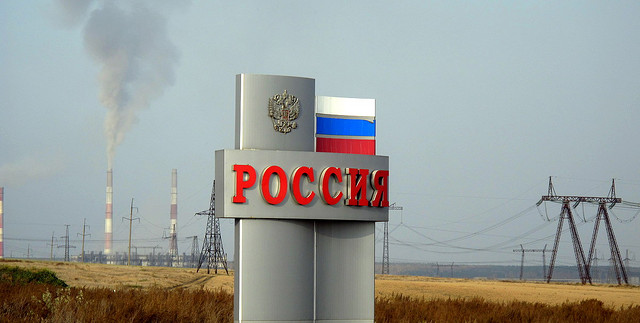
BACKGROUND: For decades, U.S. engagement with Central Asia rested on flawed assumptions that development assistance, conditioned on commitments to democratic reform, would gradually yield stable, pro-Western partners. In reality, democratic reforms were largely performative and cosmetic, designed to appease U.S. interlocutors and secure continued funding. Russia and China, by contrast, offered a far more attractive alternative to Central Asian elites, including security guarantees, regime support, non-interference in internal affairs and tacit acceptance of corruption. These partnerships came with fewer conditions, demanding only loyalty.
Against this backdrop, the U.S. promise of prosperity through democratic transformation remained abstract and unconvincing in the face of authoritarian realpolitik. Even reformist leaders or color revolutions were quickly co-opted or violently displaced. In private, many regional elites sought a different offer: security, investment and recognition of sovereignty…without the "democracy business." Beijing and Moscow responded with infrastructure development and military cooperation, creating entrenched dependencies.
The Trump administration’s pivot toward transactional diplomacy that prioritizes economic and security partnerships over ideological demands has opened a window of opportunity to recalibrate U.S. engagement on terms regional governments find more palatable. Washington cannot and should not replicate the corrupt bargains offered by authoritarian powers, but it can offer something categorically superior: access to global markets, cutting-edge technologies, diversified security cooperation and entry into a predictable, rules-based order. This model, though imperfect, offers autonomy without the coercion, instability and dependency imposed by Moscow or Beijing. A pragmatic U.S. strategy grounded in sovereignty, prosperity and alignment could finally forge resilient and durable partnerships.
Meanwhile, Central Asia’s younger, urban, and globally connected populations are increasingly disillusioned with both domestic authoritarianism and foreign exploitation. Nationalist and pro-sovereignty sentiment has surged, particularly in Kazakhstan, Kyrgyzstan and Uzbekistan. Russia’s invasion of Ukraine, its denial of Central Asian sovereignty and its mobilization of ethnic minorities into the Russian war effort have further fueled this backlash. Many citizens across the region have grown tired of being pawns in great-power rivalries.
It is within this context that the ASGCA represents a meaningful shift. By acknowledging regional priorities and accepting transactional diplomacy, it replaces Western idealism with strategic realism. ASGCA’s central innovation is its proposal to view these states not as isolated, vulnerable peripheries, but as a potential collective bloc, with Kazakhstan, Uzbekistan, Kyrgyzstan, Tajikistan, Turkmenistan and Azerbaijan at its core, and Afghanistan, Mongolia and the South Caucasus anchoring each end. This corridor would align sovereign interests with US strategic goals and offer three critical advantages:
- Strategically, it would anchor a contiguous bloc that counters the Russia-China-Iran axis and dilutes their regional influence.
- Economically, it would unlock immense investment opportunities, from critical minerals and renewable energy, to trade corridors like the Trans-Caspian International Transport Route (Middle Corridor), bypassing Russian chokepoints and providing an alternative to China’s Belt and Road Initiative.
- In terms of security, it would foster regional self-sufficiency in counterterrorism, border control and internal stability, thereby reducing the need for US military presence. This feature aligns with both American and regional preferences.
Yet, ASGCA’s vision omits a crucial dimension. Without an explicit strategy for containing Russian influence, the project risks being strategically incoherent.
IMPLICATIONS: While international law affirms Russia’s 1991 borders,[1] the Kremlin’s own doctrine tells another story. The Russkiy Mir (Russian World) ideology, a cornerstone of Moscow’s aggressive expansionism, asserts a transnational Russian civilization that overrides international borders whenever it is politically expedient. Russia’s borders, in its own eyes, end only where they are met with sufficient resistance. This has become painfully clear since the 2008 invasion of Georgia, the 2014 annexation of Crimea and the 2022 full-scale war on Ukraine. The Kremlin’s disregard for sovereignty is not the exception: it is policy. This is why any peace settlement in Ukraine is likely to be tactical, not transformational. Moscow will use the opportunity to rearm and resume aggression when conditions are more favorable. As such, the West cannot afford another cycle of accommodation and illusion. A sustainable US strategy must empower regional actors to deter Russian pressure without direct American military deployment.
For this reason, any effort to unify and empower Greater Central Asia must explicitly incorporate Russian containment. By systematically investing in the region’s defense capabilities, economic integration and institutional resilience, the US can help Central Asia and the South Caucasus form a cohesive bloc capable of withstanding Russian pressure. These nations offer unique strategic value, including deep familiarity with Russian tactics, a pragmatic understanding of hard power and a growing desire to pursue independent paths. Unlike Western policymakers who often misread Moscow through a liberal, rational-actor lens, Central Asians and Caucasians harbor no such illusions, fully recognizing the necessity of strength and self-reliance.
Six reasons underscore this imperative.
First, without containment, sovereignty will remain fragile. Russian influence is not limited to tanks and troops. It manifests itself in cyberattacks, disinformation campaigns, political subversion, cultural hegemony, economic blackmail and manipulation of ethnic minorities. In Kazakhstan, Russia’s rhetoric about “protecting Russians abroad” has stoked deep anxieties among political elites. In Armenia, Moscow’s failure to intervene during the 2023 Azerbaijani offensive exposed the hollowness of its security guarantees. If Greater Central Asia is to be more than a vision, it must be hardened against the hybrid Russian threats from the outset.
Second, containment is a precondition for regional integration. The Middle Corridor, a central component of ASGCA’s economic vision, cannot function without security. However, these corridors remain vulnerable to disruption without regional security guarantees. Russian influence over rail, road and energy infrastructure, particularly in Kyrgyzstan and Tajikistan, makes any ambitious transit strategy susceptible to sabotage or political manipulation. A concerted effort to reduce Russian leverage is essential to ensuring the viability of east-west connectivity.
Third, Russia exploits regional divisions. Moscow excels at divide-and-rule tactics. It amplifies nationalist tensions, exacerbates border disputes and fuels distrust between neighbors. The longstanding water and border tensions between Uzbekistan and Kyrgyzstan are fertile ground for Russian interference. A Greater Central Asia bloc must prioritize coordinated responses to hybrid threats, including joint intelligence sharing, cybersecurity collaboration and counter-disinformation mechanisms. Containment is not just a military goal. It is the precondition for durable regional unity. Geographically, this effort should concentrate along Russia’s southern flank, with the support of Turkey, India, Pakistan and the United States.
Fourth, U.S. credibility depends on strategic clarity and continuity. In Georgia, Moldova and Ukraine, the West’s failure to provide hard security guarantees has had devastating consequences. Central Asian states have taken note. U.S. commitments must be unambiguous and they must endure beyond election cycles. If Washington abandons this strategy after four years, it will validate Russian and Chinese narratives about American unreliability and drive regional partners back into the arms of Moscow and Beijing.
Fifth, containment can be achieved without escalation. A containment strategy does not require US troops on the ground. Instead, it must empower local states to serve as their own first line of defense, resilient enough to resist Russian coercion. This includes arms transfers, defense cooperation, cybersecurity partnerships, sanctions enforcement and media resilience. It also means supporting sovereign decision-making and reducing dependence on Russian economic systems. Containment, if done smartly, is a stabilizing force, not a destabilizing one.
Sixth, a containment strategy accelerates the end of the Ukraine war. Central Asia and the South Caucasus are critical nodes in Russia’s sanctions evasion networks. Enforcing export controls, cutting off trans-shipment of dual-use goods and closing legal loopholes in countries like Kazakhstan, Armenia and Georgia would severely disrupt Russia’s war economy, hasten its operational exhaustion and enable a faster, more favorable resolution to the conflict. Building a coalition of states committed to rejecting Russian revisionism not only weakens the Kremlin. It also creates the conditions for an eventual peace on Ukrainian terms.
AUTHOR’S BIO: John DiPirro is a foreign policy and geopolitical risk expert focused on democracy, governance, conflict mitigation and strategic advocacy in the Caucasus, Central Asia and Eastern Europe. John spent the past 14 years leading democracy and political support programs across the Kyrgyz Republic and Georgia with the International Republican Institute.
[1] This excludes Crimea, Donetsk, Luhansk, Zaporizhzhia, Kherson, Abkhazia and South Ossetia as Russian territory.
The Middle Corridor Remains Supplementary to Major Trade Routes between the EU and China
By Emil Avdaliani
Although the Middle Corridor, connecting the EU and China via the Black Sea and Central Asia, has witnessed notable development in recent years, its swift expansion is constrained by both geographical barriers and the political complexities prevalent along the route. The Northern Corridor through Russia would be further consolidated should Russia achieve a favorable resolution to its war in Ukraine. While the Middle Corridor serves as a dependable link between Central Asia and the EU, it is likely to remain a complementary route to the northern Eurasian commercial highway.
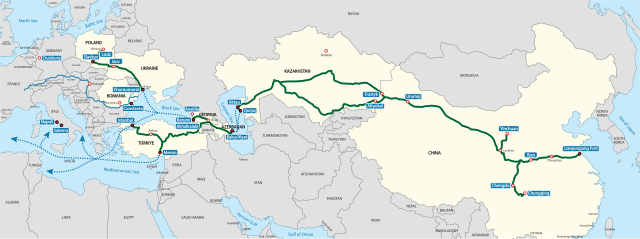
Photo source: Tanvir Anjum Adib
BACKGROUND: The Middle Corridor, also known as the Trans-Caspian Transport Corridor, extending from the Black Sea to Central Asia and western China, has gained prominence since 2022 following the onset of the war in Ukraine. Although the route had existed in practice since the 1990s and was formally inaugurated in the early 2000s, its scope remained limited due to inadequate infrastructure, geopolitical instability in the South Caucasus, and, more significantly, the appeal of the Russian route, which had facilitated trade between China and the EU. Compounding these challenges is the corridor’s multimodal nature—comprising both land and sea segments—which, despite making it the shortest geographical path between China and the EU, has ultimately rendered its operation economically unviable.
Indeed, data from the period prior to 2022 highlights this unfavorable reality: merely 2–3 percent of overland containerized freight traversed the Middle Corridor. This dynamic shifted following Russia’s invasion of Ukraine, as the route became increasingly associated with geopolitical volatility, the unpredictability of Moscow, and the risk of financial loss for both the EU and China. In addition, the European Union’s imposition of extensive sanctions on Russia has further incentivized the pursuit of alternative transport corridors.
Overall, cargo traffic along the Middle Corridor increased in 2024 for railway operators in Georgia, Turkey, Kazakhstan, and Azerbaijan. For example, Azerbaijani authorities reported transporting over 18.5 million tons of goods in 2024, representing a 5.7 percent increase compared to 2023. In the case of Kazakhstan’s railways, the volume of freight carried via the corridor grew by 63 percent, reaching 4.1 million tons in 2024. Turkish and Georgian railway companies likewise experienced a rise in cargo throughput during the same year.
In late 2024, Kazakhstan unveiled plans to finance the construction of a new terminal at Azerbaijan’s Alat port. Concurrently, Astana is undertaking development efforts at the Aktau port, with authorities aiming to triple container throughput by the end of the decade. Additional recent developments similarly suggest a significant reorientation of strategic focus toward the corridor. Notably, in March, Azerbaijan hosted 24 companies for the General Assembly of the Trans-Caspian International Transport Route International Association (TITR IA) Legal Entities Union. The objective of the assembly was to raise cargo volumes along the Middle Corridor to 96,000 twenty-foot equivalent units (TEUs).
IMPLICATIONS: Thus far, the outlook for the Middle Corridor has appeared favorable. Major powers are increasingly expressing interest in the corridor’s development. In early April, the inaugural Central Asia–EU Summit was convened in Samarkand, Uzbekistan. The event was viewed as an effort to enhance the European Union’s presence in the region amid intensifying great power rivalry over Eurasian connectivity. The EU pledged a €12 billion assistance package, of which €3 billion will be allocated to the transport sector. Central Asia holds strategic significance for the EU, particularly considering the Middle Corridor’s advancement within the scope of Brussels’ Global Gateway initiative—a rival to China’s expansive Belt and Road Initiative (BRI). With improved transport infrastructure, cargo delivery times between Europe and Central Asia are projected to be halved, reaching approximately 15 days.
China is another major stakeholder, whose growing interest in the Middle Corridor is evident through both political engagement and investment initiatives. A Chinese firm is currently constructing a deep-sea port in Anaklia on Georgia’s Black Sea coast, a development that may prove instrumental in achieving the goal of capturing a 20 percent share of EU–China maritime trade by 2035. Previous efforts to build the port were hindered by domestic political disputes, but the present geopolitical environment differs, with China now actively supporting the project. Beijing has also sought to strengthen its political relationship with Georgia, culminating in the signing of a strategic partnership agreement in 2023. A similar agreement was concluded with Azerbaijan in 2024, with an upgraded version on April 23, 2025, in which China committed to enhancing the country’s Caspian Sea ports and advancing the long-delayed China–Kyrgyzstan–Uzbekistan railway. These developments collectively signal the emergence of a near-continuous corridor stretching from China’s western frontier to the Black Sea.
However, given the evolving geopolitical dynamics surrounding Ukraine—particularly the ongoing negotiations between Russia and the U.S.—the Middle Corridor may face adverse consequences. Should Russia secure substantial gains in Ukraine, its strategic influence in the South Caucasus is likely to be enhanced. This could result in the consolidation of Georgia, Armenia, and Azerbaijan within Moscow’s sphere of influence, thereby empowering Russia to obstruct the functioning of a transit route that circumvents its territory from the south and facilitates access for rival powers into Central Asia. Potential measures at Russia’s disposal span from overt military actions to more subtle strategies, including embedding itself economically through infrastructure investments in the South Caucasus and Central Asia.
Moreover, despite the war in Ukraine entering its fourth consecutive year, this has not signaled the complete demise of the Russian route. Indeed, between 2022 and 2024, the northern corridor has continued to function as a major conduit between China and the EU. While the volume of freight transported along this route has fluctuated, it has nonetheless persisted as a vital commercial artery. Consequently, the Middle Corridor has continued to serve in a primarily complementary capacity.
This underscores the enduring viability of the northern route and should Russia–U.S. relations experience a substantial improvement; major enterprises may increasingly favor the well-established northern corridor. In contrast, the Middle Corridor continues to face constraints arising from both geographic challenges and the involvement of multiple stakeholders along its path. Infrastructure remains underdeveloped, and while intergovernmental cooperation is progressing, it still falls short of what is necessary. The true potential of the Middle Corridor is projected to reach up to 20 percent of overland containerized trade between China and the EU. However, this estimate is conditional upon several factors, including the successful completion of the Anaklia port and the expansion of the railway network across the South Caucasus.
CONCLUSION: Although the Middle Corridor has experienced considerable growth in recent years, its overall potential remains constrained. Geographic limitations, combined with persistent political complexities along the route, continue to impede rapid development. However, broader shifts in Eurasian geopolitics pose even greater challenges—should Russia succeed in concluding the war in Ukraine favorably and reconciling with the U.S., the corridor traversing Russian territory would be further solidified. This scenario does not imply that the Middle Corridor will cease to evolve. Rather, it is expected to continue expanding while remaining complementary to the northern Eurasian trade axis and functioning as a reliable conduit between Central Asia and the EU.
AUTHOR BIO: Emil Avdaliani is a professor of international relations at the European University in Tbilisi, Georgia, and a scholar of Silk Roads. He can be reached on Twitter/X at @emilavdaliani.
A Partner, not a Power: The EU’s Evolving Engagement with Central Asia
By Mehmet Fatih Oztarsu
The first EU–Central Asia Summit took place amid intensifying global competition, emphasizing the EU’s efforts to strengthen ties through connectivity, economic diversification and access to critical raw materials. Key regional concerns—including migration, sanctions circumvention, and infrastructure gaps—were also addressed. There is growing anticipation that the EU will adopt a more holistic and regionally attuned strategy, moving beyond great power rivalry to foster inclusive, long-term partnerships. Such an approach would bolster the EU’s credibility as a constructive and complementary actor in Central Asia’s evolving geopolitical landscape. Instead of competing against Russia and China, the EU can play more effective role as a reliable partner.
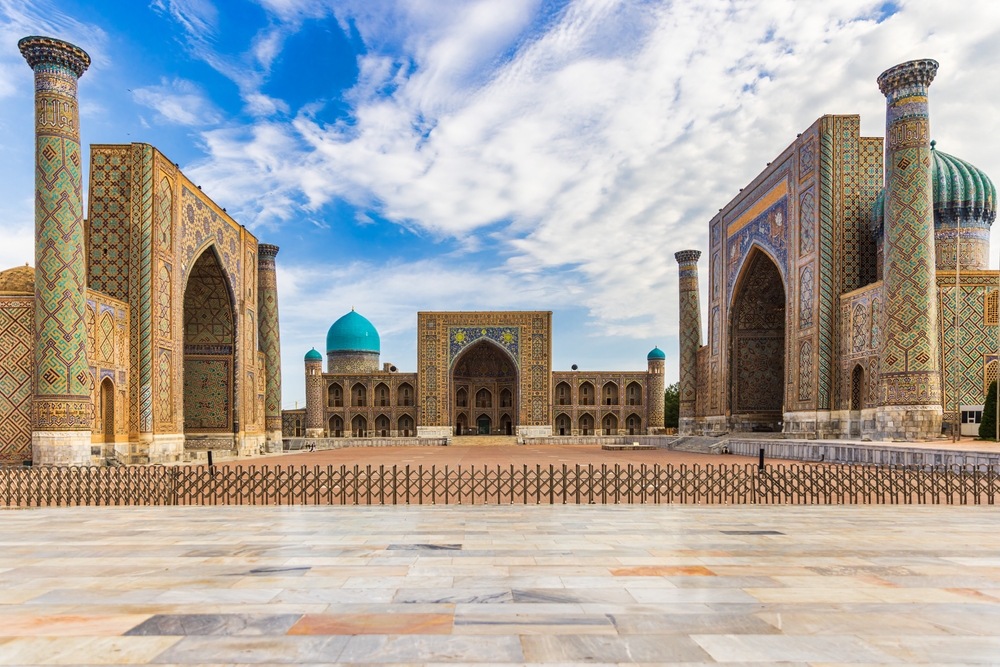
Photo source: Framalicious
BACKGROUND: The first EU–Central Asia Summit was held in Uzbekistan on April 4, 2025, in Uzbekistan. The EU was represented by President of the European Council António Costa and Head of the European Commission Ursula von der Leyen. During the summit, multilateral relations were addressed in a comprehensive and multidimensional manner. The parties discussed various areas of cooperation, including security challenges, economic collaboration, connectivity under the Global Gateway framework and people-to-people ties.
The EU holds a distinct position in the region, being Central Asia’s second-largest trading partner and its largest investor, accounting for 22.6 percent of the region’s foreign trade and 40 percent of foreign investments. In particular, Kyrgyzstan, Uzbekistan and Tajikistan have expressed their intention to further develop trade relations with Europe under the Generalised Scheme of Preferences (GSP), which facilitates more favorable access to the EU market.
This summit is also significant given its timing—coinciding with a period in which the U.S., alongside Russia and China, has emerged as a competitor to the EU in the region. In this new geopolitical landscape, strengthening relations with alternative markets has become a strategic objective for all major actors. However, the EU is expected to adopt a clearer stance on key issues in its evolving engagement with Central Asia. There are growing expectations that the EU will address the unintended negative impacts of its sanctions on Russia, which have also affected the region. Additionally, greater emphasis is expected on areas that align more closely with the region’s pressing needs—such as agricultural development and connectivity infrastructure—rather than focusing narrowly on selected industries or geopolitical competition.
IMPLICATIONS: The EU’s timely convening of the Central Asia Summit coincided with a period in which global developments are compelling all countries to make new strategic choices. Actors affected by the protectionist U.S. economic policies, Russia’s war in Ukraine, and China’s rapid and seemingly unstoppable economic expansion are increasingly seeking new avenues for cooperation. While the EU already maintains a satisfactory level of economic engagement with the region, this new initiative signals an ambition to address more niche and forward-looking areas. These include specific areas such as geographical and digital connectivity, the green economy, critical raw materials and water management.
Within the Global Gateway initiative, the EU has sought to engage with the region primarily through infrastructure projects, allocating a budget of €300 million for this purpose. Although the EU’s initial intention was, to some extent, to compete with China, it has opted for a more nuanced and tempered approach in recent years. As Dr. Stefan Meister from the German Council on Foreign Relations explains, “EU is not about seriously challenging China and Russia, but rather about offering some alternatives in some sectors, competing in some sectors—especially on raw materials and on connectivity.” This perspective reflects the EU’s new approach of pragmatic engagement rather than direct confrontation, seeking to expand its influence through sector-specific cooperation and strategic investments.
Given China’s geographical proximity and economic leverage, it has become clear that directly confronting Beijing’s dominant position in Central Asia would yield little benefit for any actor involved. Instead, the EU has pursued a strategy of complementarity rather than rivalry. Central Asian countries, positioned to benefit from this geopolitical pragmatism, stand to gain significantly—particularly through the further development of the Trans-Caspian Transport Corridor, which promises to enhance regional connectivity, linking the EU and Central Asia within 15 days and expanding their access to diversified markets.
In addition, the issue of critical minerals is also of great importance in the new period. The EU’s Critical Raw Materials Act, proposed in March 2023, aims to ensure a secure, sustainable and diversified supply of critical raw materials essential for strategic sectors. As demand for materials like rare earths and especially lithium is projected to increase up to twelvefold by 2030, the EU seeks to reduce its overreliance on single third-country suppliers. The Act sets specific targets: at least 10 percent of the EU’s annual consumption should be extracted within Europe, 40 percent processed, and 25 percent recycled, with no more than 65 percent of any strategic raw material imported from a single external source. These measures are central to the EU’s efforts to diverse partnerships with Central Asia.
Kazakhstan’s substantial uranium reserves and its role as a producer of 19 critical raw materials essential to the EU make it a strategically important partner. Additionally, Kyrgyzstan, Tajikistan, and Uzbekistan possess reserves of 43, 17, and 71 critical minerals respectively, further enhancing the region’s value from the EU’s perspective. However, despite this resource richness, the region’s transport connectivity remains heavily influenced by Russia and China—posing a significant challenge for the EU as it seeks to establish independent and secure supply routes.
Migration constitutes a growing challenge in EU–Central Asia relations in addition to the risk of sanctions circumvention and agriculture development limitations. The EU has expressed increasing concern over migration flows originating from or transiting through the region—particularly given instability in Afghanistan and broader socioeconomic pressures within Central Asia. Despite this pragmatic exchange, questions remain about the long-term sustainability and oversight of such processes.
On the other hand, an increasing number of Russian companies are reportedly using Central Asia to circumvent Western sanctions, raising concern within the EU. Russian-affiliated businessmen have begun relocating portions of their assets to countries in the region to shield them from asset freezes, a development the EU views unfavorably. In 2024, several companies were added to the U.S. sanctions list. Additionally, remittances from Russia remain a vital source of income for countries like Tajikistan and Kyrgyzstan. However, since the imposition of sanctions, this financial flow has become unstable, posing significant challenges to the economic stability of these remittance-dependent economies. The EU needs to address this issue in the future since there is no specifically designed policy to resolve it.
Lastly, the EU has been slow to support the broader economic development of Central Asia. According to World Bank data, the agriculture sector remains a weak component of total GDP in the region: 4 percent in Kazakhstan, 9 percent in Kyrgyzstan, 11 percent in Turkmenistan, 20 percent in Uzbekistan and 22 percent in Tajikistan. The service sector dominates these economies, accounting for 56 percent in Kazakhstan, 52 percent in Kyrgyzstan, 45 percent in Turkmenistan, 43 percent in Uzbekistan, and 35 percent in Tajikistan. Under these conditions, the EU needs to play an effective role in strengthening the region’s capacity for industrial production and economic diversification. A narrowly focused strategy centered solely on gas, oil, and critical raw materials risks undermining the long-term goals of sustainable and inclusive cooperation.
CONCLUSION: Although EU policy frameworks are often presented with ambitious and appealing labels, critical areas remain that require greater attention in Central Asia. Rather than pursuing selective economic cooperation, the EU should prioritize agricultural development, the diversification of industrial sectors and the provision of sufficient infrastructure support. Moreover, a clear and coherent stance on the indirect impact of sanctions against Russia in the region is urgently needed. These ongoing uncertainties and regional expectations will play a defining role in shaping the future trajectory of EU–Central Asia relations.
On the other hand, framing cooperation with Central Asia solely as a tool for competing with Russia and China is unlikely to yield meaningful benefits for either the EU or the region. A more constructive approach would involve the EU positioning itself as a complementary partner, offering alternatives rather than rivalry. This strategy not only fosters regional stability but also helps mitigate the negative effects of U.S. protectionist tendencies, thereby strengthening the EU’s credibility as a balanced and reliable actor in Central Asia.
AUTHOR BIO: Dr Mehmet Fatih Oztarsu is Assistant Professor at Joongbu University and Senior Researcher at the Institute of EU Studies at Hankuk University of Foreign Studies. He studied and worked in Baku, Yerevan, Tbilisi, and Seoul as an academic and journalist. He is the author of numerous articles and books on South Caucasus and Central Asian affairs.
The “Inkai Incident”: Under the Surface of Kazakhstan’s Uranium Production
By Sergey Sukhankin
In early January 2025, operations at the uranium-producing Kazakhstan-based Joint Venture Inkai LLP (JV Inkai) were temporarily halted – the venture, established in the early 1990s, has been jointly managed by Kazatomprom (which holds a 60 percent stake) and the Canadian company Cameco (with 40 percent) – resulting in a brief decline in the share prices of both firms in New York and evident concern among Canadian investors. After a short interruption, activities at Inkai resumed without disruption. This event – though seemingly a minor occurrence that largely escaped the attention of many analysts – reflects broader and more concerning trends (particularly for the West) emerging within the global uranium market, in which Kazakhstan plays a pivotal role.
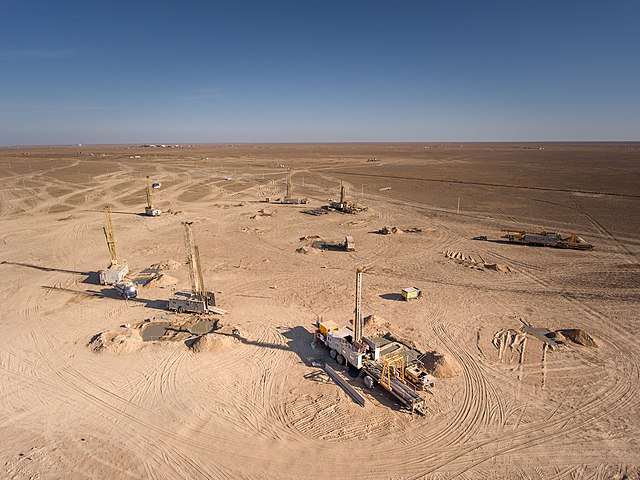
Photo source: NAC Kazatomprom JSC
BACKGROUND: The strategic significance of uranium extends well beyond its military applications. The rapidly increasing global interest in nuclear energy—among both economically advanced and developing countries—is contributing to uranium’s emergence as a commodity of critical strategic value. According to estimates by the International Energy Agency (IEA), in addition to the existing 420 nuclear reactors worldwide, 63 new reactors are currently under construction, and the operational lifespan of a further 60 reactors is being extended. As a result, uranium's importance is projected to grow steadily in the years ahead. The present and future stability of the global nuclear energy sector is therefore highly contingent upon reliable access to substantial, readily extractable uranium reserves located in politically stable and predictable nations. It is precisely in this context, however, that significant challenges begin to surface.
Following the onset of Russia’s aggression against Ukraine in February 2022, Western access to two critical sources of both enriched and unenriched uranium has been partially obstructed. U.S. sanctions targeting Russian uranium have jeopardized U.S. access to this supply, while geopolitical instability—marked by a pronounced anti-Western orientation—in Sub-Saharan Africa, particularly in Niger, has effectively severed France’s access to locally sourced unenriched uranium. Exacerbating this situation, other major African uranium producers, including Namibia and Tanzania, are increasingly inclined to cooperate with Russia and China in uranium extraction activities. This emerging alignment places them in growing opposition to Western companies and their strategic interests.
At present, the already limited list of geopolitically stable, world-class uranium-producing nations has effectively narrowed to just three: Kazakhstan, Canada, and Australia. Among them, Kazakhstan stands as the global leader in the production of unenriched uranium, accounting for over 40 percent of total global output, and ranks as the second-largest country in terms of uranium reserves.
The primary concern lies in the fact that, despite its considerable wealth in natural resources, Kazakhstan is unable to fully leverage its vast resource potential. The country remains heavily dependent on two dominant geopolitical actors—Russia and China—both of which exert significant influence over the direction and development of Kazakhstan’s uranium-producing sector. Most critically, these two states maintain increasingly strained relations with the West.
Consequently, certain Kazakhstan-based analysts have voiced suspicions that the underlying cause of the operational halt at Inkai was pressure exerted by Russia, allegedly in response to Kazakhstan’s post-2022 efforts to alter the logistics of its uranium exports by decreasing reliance on Russian transit routes and instead utilizing the Trans-Caspian International Transport Route (commonly referred to as the Middle Corridor) as an alternative to exporting uranium through Russian territory.
IMPLICATIONS: The global uranium industry is currently characterized by rapidly increasing demand alongside growing uncertainty regarding the reliability of supply, driven largely by global and regional geopolitical disruptions. Within this context, Kazakhstan’s role as a resource-rich and historically stable supplier of uranium has acquired a qualitatively new significance. Notably, Kazakh authorities have publicly committed to boosting uranium production in 2025 and to diversifying both their export destinations and logistical routes, aiming to reduce the country's reliance on Russia. Nevertheless, the “Inkai incident”—which allegedly represents only the visible portion of deeper structural dynamics affecting Kazakhstan’s uranium sector—raises three key concerns.
First, can Kazakhstan successfully restructure its existing logistical routes and thereby reduce its strategic dependence on Russia? On the surface, such a shift appears feasible. According to statistics provided by Kazakh authorities, the country has made tangible progress in increasing uranium shipments through the Middle Corridor. Available data indicate that approximately 64 percent of West-bound uranium exports are now transported via this route. Moreover, Kazakhstan has also expanded its uranium exports to Western markets, with shipments destined for the United States gaining particular prominence.
The reality, however, appears significantly more complex. Despite recent efforts to diversify transit routes, a substantial portion of Kazakhstan’s uranium exports continues to be transported through Russian territory. Furthermore, Russia’s state-owned corporation Rosatom maintains (in)direct control over at least five of Kazakhstan’s fourteen major uranium production sites, reinforcing Russia’s strategic influence over the sector. In addition, the Middle Corridor presents notable challenges. Geopolitically, Georgia—an essential transit country along the route—occupies a critical position, and its political leadership has demonstrated increasing alignment with Moscow, potentially complicating matters should Russo-Western relations further deteriorate. From a logistical standpoint, representatives of the Canadian firm Cameco have expressed concerns, stating that the Middle Corridor “has proven to be neither reliable nor predictable,” due to the complex network of countries traversed and the numerous permits required for transit.
Compounding these challenges is the apparent ambivalence within Kazakhstan regarding the exclusion of Russia from its current uranium transportation framework. Specifically, Kazakh officials have indicated that the country does not intend to significantly expand the use of the Middle Corridor for uranium exports. Additionally, many Kazakhstan-based experts express skepticism about any prospective reduction in cooperation with Rosatom (i.e., Russia). On the contrary, a prevailing view among these analysts is that bilateral collaboration in the uranium sector is likely to deepen in the future.
Second, what is the actual role of China in Kazakhstan’s uranium industry and how will this role evolve? At present, China is the world’s second-largest consumer of uranium, following the United States, and its demand is expected to continue rising. Kazakhstan serves as China’s primary source of uranium: according to several studies, over half of Kazakhstan’s uranium output is currently exported to China, with some estimates suggesting this figure may be as high as 60 percent. This situation, as noted by representatives of major Western uranium-related enterprises, “raises concerns about reduced availability for Western markets, potentially exacerbating global supply constraints,” a challenge that is already beginning to manifest within the industry.
Rosatom-affiliated Uranium One Group recently concluded an agreement with the Chinese firm SNURDC Astana Mining Company Limited, a subsidiary of the State Nuclear Uranium Resources Development Co., Ltd. Under this arrangement, the Russian side transferred its shares in uranium-producing sites located in Northern Kazakhstan (Northern Khorasan) to its Chinese counterparts. At present, there is no consensus among experts regarding China’s rationale for acquiring stakes in what is considered a relatively depleted and comparatively minor uranium production site.
While some analysts contend that the acquisition primarily serves China’s geoeconomic objectives—particularly in light of projections indicating a substantial increase in the country’s uranium consumption over the coming years—others emphasize a more overtly geopolitical dimension to China’s actions. Notably, Stanislav Pritchin of the Central Asia Department at the Institute of World Economy and International Relations of the Russian Academy of Sciences has drawn attention to China’s established practice of acquiring “unpromising” oil and natural gas deposits. In his view, such acquisitions function as instruments for expanding China’s strategic presence within the host country.
Third, what is the future role of Western companies in Kazakhstan’s uranium industry? Given that neither China nor Russia appears willing to reduce their involvement in the sector—thereby sustaining Kazakhstan’s strategic dependency on both actors—serious concerns have emerged regarding the potential marginalization or even eventual withdrawal of Western firms from the country’s uranium landscape. Indeed, some Kazakhstan-based experts have implicitly acknowledged a widely discussed notion circulating in Western policy and business circles: the ongoing bifurcation of the global uranium industry. This refers to the emergence of a distinct segmentation of uranium supply chains along geopolitical lines, with one stream aligned with the West and the other with the China-led bloc. Within this context, it is feared that Kazakhstan may ultimately be compelled to align more closely with the latter and reduce its cooperation with Western partners accordingly.
Undoubtedly, such a scenario would only be likely to materialize in the event of a further deterioration in political and economic relations between China (and, under certain conditions, Russia) and their Western counterparts. While this scenario remains hypothetical at present, it is by no means implausible.
CONCLUSION: Although Kazakhstan and its political leadership have expressed strong interest in expanding foreign—particularly Western—participation in the country’s uranium industry, the influence of external geopolitical dynamics cannot be overlooked. As uranium increasingly assumes a role in the global energy mix comparable to that historically occupied by fossil fuels, the issue of access to and supply of this resource has transcended purely economic considerations and has firmly entered the realm of geopolitics.
In light of the intensifying geopolitical competition between East and West over access to emerging markets and spheres of influence, it is conceivable that China and its strategic partners may seek to curtail Western access to Kazakhstan-based uranium—mirroring developments in Sub-Saharan Africa, where Western firms are increasingly being displaced from uranium-related ventures. To avert a potential supply shock—akin to that experienced in the oil and natural gas sector following Russia’s attempt, in the aftermath of February 2022, to weaponize hydrocarbon exports as a means of exerting geopolitical pressure on the West—it is imperative that Western companies (and, arguably, governments) begin to explore alternative uranium sources to sustain their nuclear energy agendas. Given the small number of globally significant suppliers, increased attention should be directed toward Canada and Australia, which possess substantial uranium reserves and are regarded as geopolitically stable and reliable partners.
AUTHOR BIO: Dr. Sergey Sukhankin is a Senior Fellow at the Jamestown Foundation and the Saratoga Foundation (both Washington DC) and a Fellow at the North American and Arctic Defence and Security Network (Canada). He teaches international business at MacEwan School of Business (Edmonton, Canada). Currently he is a postdoctoral fellow at the Canadian Maritime Security Network (CMSN).

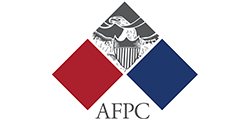

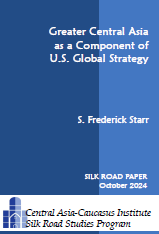 Silk Road Paper S. Frederick Starr,
Silk Road Paper S. Frederick Starr, 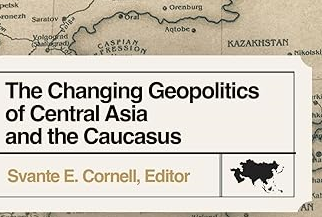 Book Svante E. Cornell, ed., "
Book Svante E. Cornell, ed., "